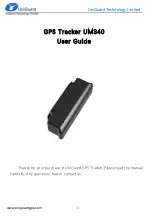
Installation Procedures
2-6
560-0982-00 Rev D
Apollo CNX80 Installation Manual
For installations where two CNX80’s are installed, the second CNX80 may be installed in the radio stack
below the primary unit, or in a radio stack to the right of the primary radio stack (a second stack). In these
instances, the primary CNX80 must be installed within the acceptable field-of-view, and the preferred
location for the secondary CNX80 is also within the acceptable field of view. However, the secondary
CNX80 may be installed outside of the acceptable field-of-view but can only be used as a backup in the
event of a failure of the primary CNX80.
2.5.3.1 Determination of Acceptable Field-of-View
The FAA has determined that the acceptable field-of-view for TSO C146a installations is approximately
±
35
°
horizontally from the center of the attitude indicator (or centerline of the pilot’s seat / yoke). The
acceptable vertical field-of-view includes the area from the top of the instrument panel to the portion of the
instrument panel that is immediately below the basic ‘T’ instruments. For IFR GPS operations, the
CNX80 must be located within the acceptable field-of-view. Refer to Figure 2-1 and the steps below to
determine whether or not the CNX80 is within the acceptable field-of-view:
1.
Measure the horizontal distance from the centerline to the left or right edge of the CNX80, as
appropriate.
2.
If the CNX80 is mounted to the right of the instruments, and the left edge of the CNX80 is within 13.8
inches to the right of the centerline, and the bottom edge of the CNX80 is in the acceptable area, the
CNX80 is considered within the acceptable field-of-view.
3.
If the CNX80 is mounted to the left of the instruments, and the right edge of the CNX80 is within 11.8
inches to the left of the centerline, and the bottom edge of the CNX80 is in the acceptable area, the
CNX80 is considered within the acceptable field-of-view.
4.
If the CNX80 does not meet the criteria for acceptable field-of-view as defined above, the installation
may only be approved for IFR operations under the AML if the location has been previously approved by the
FAA (ACO). Refer to Appendix E for a list of aircraft that do not meet the acceptable field-of-view
requirement above but have been evaluated by the FAA and determined to be acceptable.
bottom edge of
CNX80 must be
within this area to
be within the
acceptable field-
of-view
Pilot's Instrument 'T'
Instrument 'T' Centerline
16.8 in
16.8 in
Glareshield
1
NOTES:
1. FOR AIRCRAFT WITHOUT THE BASIC INSTRUMENT 'T' CONFIGURATION, THE CENTER OF THE PILOT'S YOKE
SHOULD BE USED TO DETERMINE THE CENTERLINE.
2. FOR AIRCRAFT WITHOUT THE BASIC INSTRUMENT 'T' CONFIGURATION, THE LOWER LIMIT OF THE
ACCEPTABLE FIELD-OF-VIEW SHOULD BE 3.25 INCHES BELOW THE BOTTOM OF THE LOWEST INSTRUMENT
TYPICALLY FOUND IN THE BASIC 'T' OR CDI, WHICHEVER IS LOWER.
3. FOR AIRCRAFT IN WHICH THE TYPE CERTIFICATED CDI OR HSI LOCATION IS BELOW THE BASIC 'T', THE
LOWER LIMIT OF THE ACCEPTABLE FIELD-OF-VIEW SHOULD BE THE BOTTOM OF THE CDI OR HSI.
ACCEPTABLE
FIELD-OF-VIEW
AREA
2
3
13.8 in
11.8 in
3.25 in
lower limit
upper limit
Figure 2-1 – Acceptable Field-of-View
Summary of Contents for Apollo CNX80
Page 1: ...Apollo CNX80 Installation Manual September 2003 560 0982 00 Rev D...
Page 10: ...Table of Contents viii 560 0982 00 Rev D Apollo CNX80 Installation Manual NOTES...
Page 30: ...General Information 1 20 560 0982 00 Rev D Apollo CNX80 Installation Manual NOTES...
Page 114: ...Periodic Maintenance 6 2 560 0982 00 Rev D Apollo CNX80 Installation Manual NOTES...
Page 134: ...Appendix D Interconnect Diagrams D 2 560 0982 00 Rev D Apollo CNX80 Installation Manual NOTES...
Page 167: ......
Page 168: ......
















































